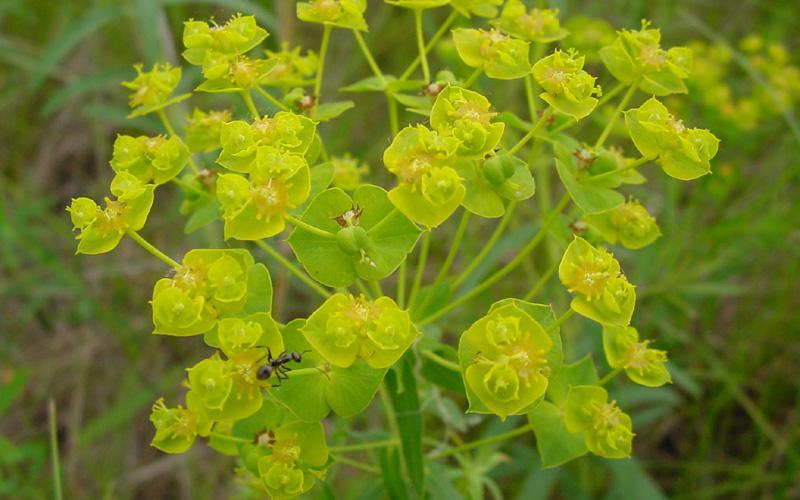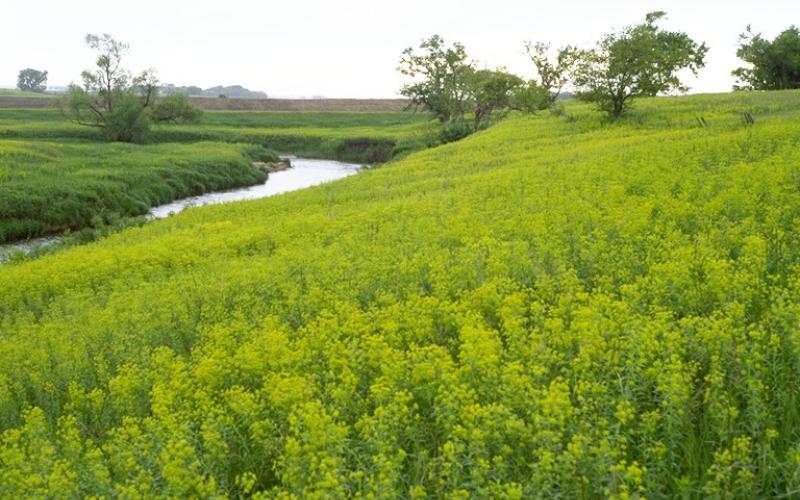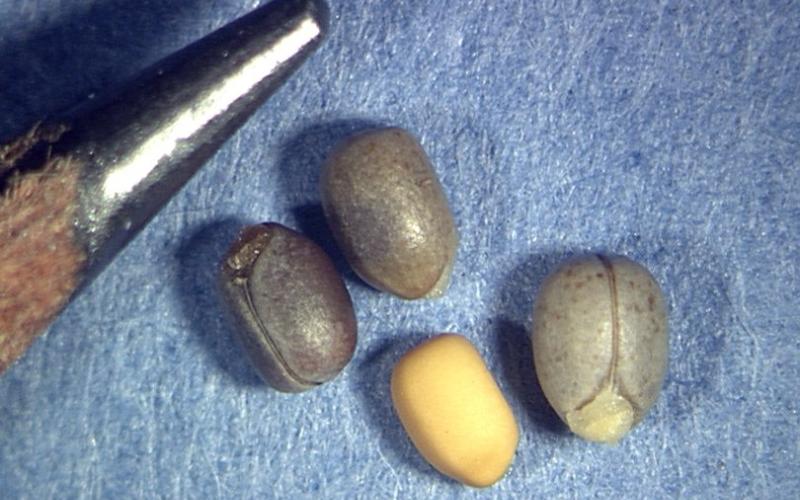Common Name: Leafy Spurge
Scientific Name: Euphorbia esula L.
Related Species: Cypress spurge, Euphorbia cyparissias L.
Legal Status
Efforts must be made to prevent seed maturation and dispersal of plants into new areas. Additionally, no transportation, propagation, or sale of these plants is allowed. Failure to comply may result in enforcement action by the county or local municipality.
Background
Leafy spurge is native to Eurasia and has become widespread throughout the United States. It was introduced to Minnesota in 1890 as seed in a bushel of oats from Russia. By 1992, it was estimated that there were 800,000 infested acres in the central, northern, and western parts of the state, in addition to the Twin Cities area. In response, approximately 9 million leafy spurge beetles (Aphthona lacertosa) were released at over 2,000 sites in Minnesota from 1994 to the present as a biological control. Biological control with the beetles has been overwhelmingly cost-effective and successful at greatly reducing infestations at most sites. The use of beetles to control spurge continues to be a collaborative effort with public and private land managers, County Agricultural Inspectors, and the Minnesota Department of Agriculture (MDA).
Description
- Leafy spurge is a perennial plant with greenish-yellow flower bracts.
- Most leafy spurge plants flower in May and June, although mowed stems may flower later.
- The leaves are simple and opposite with a blue-grey hue.
- If the stems or leaves are cut, a distinctive white, milky sap exudes. One plant can send up clusters of multiple stems that arise from the same underground root system.
- The plant reaches a maximum height of about 4 feet.
Habitat
Leafy spurge is an invader of pastures, grasslands, prairies, and roadsides. It grows in full to part sun in a wide range of soil types, from dry to moist.
Means of spread and distribution
Each plant can produce large clumps of shoots from extensive underground stems and roots allowing the weed to overtake other vegetation quickly. In addition, leafy spurge also produces seed that explodes from the seedpods and can travel up to 20 feet. The seed is durable and can remain viable up to 10 years. Leafy spurge can disperse by wildlife, wind, water, vehicles, contaminated soil and hay. Disturbances such as road construction create opportunities for leafy spurge to spread along roadways and into agricultural and natural areas.
Leafy spurge is distributed across the northern half of the United States. Northwestern states have long battled vast infestations. Leafy spurge is reported in all Minnesota counties with the largest infestations in western Minnesota.
Impact
Once a stand of leafy spurge becomes established, it reduces pasture or grassland productivity. If leafy spurge is present in a hayfield, the hay cannot be cut and moved, resulting in economic loss. Infestations can displace native plants and reduce wildlife habitat.
Prevention and management
- Prevent the spread of seed on equipment such as mowers by cleaning the equipment after working in an infested area. Using a broom to brush seed off a mower deck is an inexpensive way to reduce seed movement from infested areas. Make sure that seed is not moving on vehicles, in tire tread or on boot soles. Do not move infested hay. To manage leafy spurge, infestations need to be monitored and treated until the seedbanks and resprouts are depleted.
- Mowing before flowering can reduce seed production. Repeated mowing throughout the season is required to cut resprouts. Mowing alone will not eliminate these infestations; in fact, it can actually increase their densities. Mowing can be beneficial when used several weeks prior to herbicide applications to increase herbicide contact with resprouting foliage.
- Repeated herbicide applications during the early spring and fall result can effectively reduce spurge. If you plan to use herbicide treatments, check with your local University of Minnesota extension agent, co-op, or certified landscape care expert for assistance and recommendations.
- Biological control is an option for reducing large infestations. Long-term studies consistently demonstrate the reliability of spurge beetles to reduce large, stable infestations. Biological control is not effective at sites with disturbance such as flooding, construction, mowing and overgrazing. The MDA, in cooperation with the Minnesota Association of County Agricultural Inspectors, oversees a statewide biological control program for this noxious weed that is free of charge to landowners. To learn more about biological control, contact the MDA or your County Agricultural Inspector.
- Goat and sheep grazing can reduce leafy spurge. Allow time for seed to pass through their systems before moving them to uninfested areas. The animals can also move seed on their coats and hooves.
- Leafy spurge lifecycle and treatment timing graphic
Toxicity
Leafy spurge is toxic to cattle and horses. These animals avoid leafy spurge unless no other forage is available.




